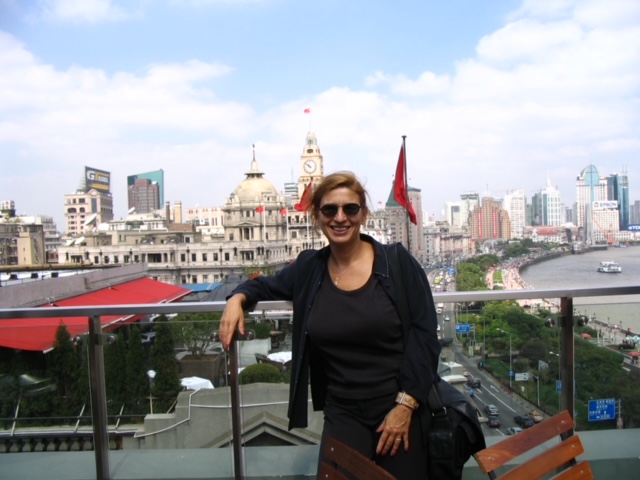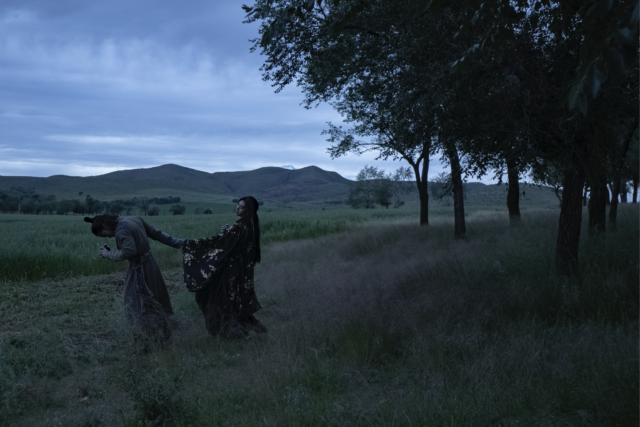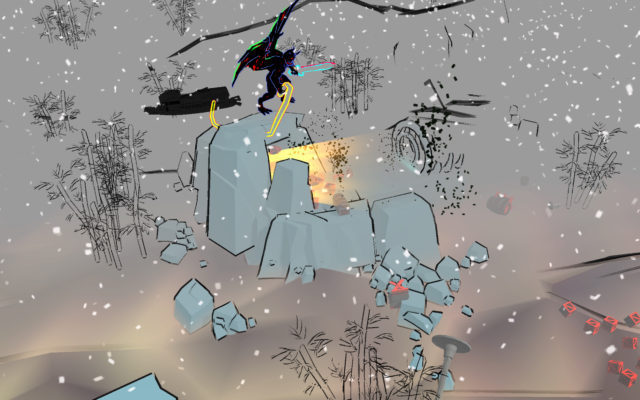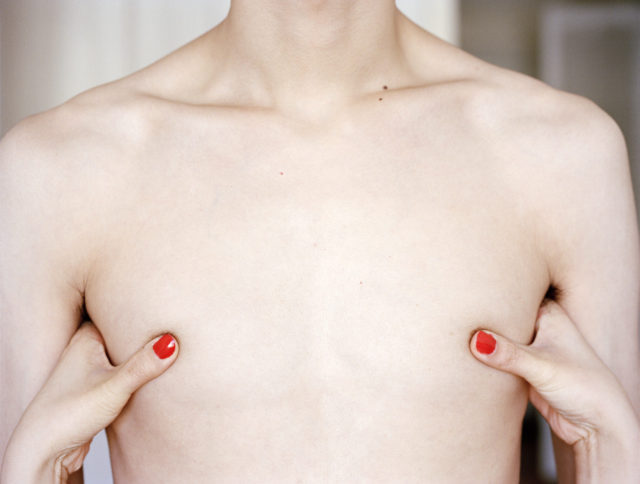
Barbara Pollack first visited China in 2004 (photo courtesy Barbara Pollack)
MIRROR IMAGE: A TRANSFORMATION OF CHINESE IDENTITY
Asia Society Museum
725 Park Ave. at 70th St.
Wednesday – Sunday through December 31, $7-$12
Artist Talk July 21, free, 7:00
Brooklyn Rail talk Tuesday, August 9, free, 1:00
asiasociety.org
In a 2010 twi-ny talk, Barbara Pollack noted, discussing her book The Wild, Wild East: An American Art Critic’s Adventures in China, “Until the late 1990s, the art world was extremely narrow-minded and unwilling to think that a major talent could come from somewhere other than Europe or North America. That has changed forever, good riddance.”
Pollack spent the following decade meeting with, writing about, and researching these major talents, in China and other countries, leading to her next book, 2018’s Brand New Art from China: A Generation on the Rise.
Right before Covid-19 forced the lockdown of restaurants, theaters, museums, and other businesses in March 2020, Pollack’s “Mirror Image: A Transformation of Chinese Identity” had been scheduled to open at Asia Society but had to be put on hold. Pollack, a writer, teacher, curator, and visual artist with a law degree, pivoted immediately and formed, with Anne Verhallen, Art at a Time Like This, a nonprofit that presents sociopolitical art, both on- and offline. Finally, after a more than two-year delay, “Mirror Image,” curated by Pollack with guest curatorial assistant Hongzheng Han, opened at the Park Ave. institution in June and has just been extended through the end of the year.
The exhibition, which Pollack sees as a kind of follow-up to Asia Society’s seminal 1998 show “Inside Out: New Chinese Art,” features multimedia works that explore the idea of “Chinese-ness” by seven artists who were born on mainland China in the 1980s, six of whom are still primarily based there. In her curatorial statement, Pollack explains, “These artists continue to push forward. We no longer view them as ambassadors from an exotic land but as representatives of a world we share.”
Pixy Liao, who lives and works in Brooklyn and was born in Shanghai in 1979, contributes intimate digital chromogenic still-lifes of parts of her and her partner’s bodies. Cui Jie creates futuristic cityscapes with hints of the past in large acrylic paintings. Tianzhuo Chen invites viewers into one of his ecstatic theatrical performances in the five-minute two-channel video Trance. Liu Shiyuan, who divides her time between Beijing and Copenhagen, combines found images with original footage in dizzying prints. Miao Ying, who lives and works in Shanghai and New York City, incorporates online gaming into her computer-animated film Surplus Intelligence, while Pilgrimage into Walden XII is a live simulation that learns over time. Tao Hui’s Similar Disguise Stills is accompanied by QR codes that take visitors into digital TikTok soap operas with nonbinary characters. And Nabuqi’s How to Be “Good Life” is a living room installation, influenced by Martin Heidegger and Richard Hamilton, that questions how popular culture invades personal spaces.

Tao Hui, Similar Disguise Stills, archival pigment prints mounted on aluminum panels, 2021 (photo courtesy of the artist, Kiang Malingue, Esther Schipper, and Macalline Art Center, Beijing)
On July 21, Pollack will moderate a conversation with Pixy and Miao at Asia Society and Nabuqi and Tao participating remotely; the talk can be viewed in person as well as online here.
Pollack is an old friend; her second book was represented by Stonesong, my wife’s literary agency. Pollack recently discussed the impact of the internet on Chinese art, putting together an exhibition during a pandemic, the Chinese art market, Chinese identity, and more in her latest twi-ny talk.
twi-ny: The exhibition includes a timeline that goes back to President Nixon’s visit to China in 1972 and Mao’s death in 1976. I know this could take a book – and you’ve written several on the subject – but, in a nutshell if possible, what have been some of the biggest changes in Chinese art and the perception of Chinese artists since then?
barbara pollack: I begin the timeline with Nixon’s visit and Mao’s death, basically the end of the Cultural Revolution, the most repressive period in modern Chinese history. The artists in this show were mostly born five to ten years later and had no experience with that kind of scary attitude toward intellectuals and creatives. In fact, they grew up in a world where there was an art infrastructure including auction houses, galleries, and, finally, new contemporary art museums. This all happened really quickly.
In the 1990s, art was still kind of underground, but by 2000, China hosted a major biennial, several official auction houses, and a few galleries. By the time these artists were exhibiting, China had an art market that rivaled that in the U.S. Most people here don’t realize that Shanghai now has a dozen contemporary art museums and there are several hundred galleries between Shanghai and Beijing and other cities. That creates an incredibly rich environment for artists to exhibit their works, despite censorship and other drawbacks.
twi-ny: The internet came to China in 1994, and much of the art in the show incorporates elements of AI, high-tech social media, and online gaming. How did the internet impact the work Chinese artists were creating?
bp: In 1994, China was still a pretty isolated, agrarian society. The internet changed everything for everyone, but mostly the generation born in the 1980s, as are the artists in this show. Suddenly you no longer had to smuggle in catalogues or merely read about shows of contemporary art elsewhere in the world. It took a while for the internet to improve, but soon you could get information directly. Artists in China learned rapidly how to have their own websites and how to email international curators. I know this firsthand by those who contacted me early on. But more importantly, before the establishment of the Great Firewall — China’s surveillance of all internet activity — people in China could learn about Chinese history not included in domestic textbooks. It was an eye-opening period and one of the reasons that this younger generation is so enthralled with the liberation that came from this technology.
twi-ny: In our 2010 twi-ny talk, you pointed out that Chinese artists were able to produce without the interference of the Ministry of Culture and that restrictions rarely impeded their output. Is that still true? That was two years before Xi Jinping took over as general secretary.
bp: I have no idea what has happened in the last two years, but it should be noted that in 2014, Xi Jinping gave a speech exhorting media, television, films, and art producers to “serve the people” and uphold Chinese culture. That’s a return to Mao’s rhetoric during the Cultural Revolution. As a result, there has been a rise in self-censorship for sure. I need to return to China to see how this has had an impact on cultural institutions and art making.

Miao Ying, Surplus Intelligence, single-channel film with sound, 2021-22 (courtesy of the artist)
twi-ny: Speaking of going to China, what was it like putting “Mirror Image” together during the pandemic? You’re used to traveling there often, but I imagine that because of Covid, the Russian invasion of Ukraine, and other political situations, that is not possible.
bp: “Mirror Image” was supposed to open in the spring of 2020, just as Covid took over New York City and museums and galleries were closed. I was devastated that the show was canceled at that point. In fall 2021, Asia Society came to me and revived the show. By then, I knew we could not ship works from China — not because of Covid but because of shipping tariffs imposed by Donald Trump. So we used “virtual shipping,” with artists sending photo works and videos digitally.
Even Nabuqi’s great installation — originally created in Beijing with elements bought at the local IKEA — was completely assembled in NYC. The artist sent us a “shopping list.” We ordered from IKEA here and then she directed the installation via Zoom with a translator in the museum. I think that’s a perfect example of how globalization can impact — even facilitate — art making in the twenty-first century. Also, several galleries — Kiang Malingue in Hong Kong, Tanya Bonakdar in Chelsea, Pilar Corrias in London, and Chambers Fine Art downtown — were incredibly helpful in sourcing works in the U.S. I really have to thank the team at Asia Society for an extraordinary effort to pull this together.
twi-ny: The exhibition includes a wild video installation by Tianzhuo Chen; a few years back, you attended one of his performances here in the city. What was it like to experience it in person?
bp: Tianzhuo’s work is the most visceral experience I have ever had in an art institution. It’s like watching wild animals refusing to get back in their cages. The tension between the space and the performers is absolutely riveting.

Pixy Liao, Play Station, digital chromogenic print, 2013 (courtesy of the artist and Chambers Fine Art)
twi-ny: Another highlight of the show are ten digital chromogenic prints by Pixy Liao. How did you get introduced to her work?
bp: I met Pixy early in her career, around 2010, when she came to New York. She and her partner, Moro, have their own quirky band and I saw them perform at Printed Matter. I may have known her even before that. I love working with Pixy because she has no ego and comes off like a cutie pie but is actually quite brilliant and powerful. That’s the tension that comes through in the photographs. Her images really speak to people about the state of relationships in today’s gender-fluid world, not just in China or Chinese communities.
twi-ny: For people who might not know that much about contemporary Chinese art, what do you think will most surprise them about this show?
bp: Everything! Many Americans have such a limited view of China that they don’t even believe that creativity is possible in such a repressive society. It is repressive, but that is the framework that Chinese artists push against and test the limits of. Almost all of the work in the show has been shown in China without problems. Many of these artists have major markets with a new generation of young Chinese collectors, and internationally. But this may change. I’m worried about the future. Very worried.
twi-ny: On July 21, you will be moderating a conversation with four of the artists. What are some of the main topics you will be discussing?
bp: We will start with a discussion of how being born in China has influenced their choices as artists and whether that still guides their work. Then I will allow the artists to guide the discussion more or less. But this issue of identity will obviously recur throughout the evening. Most of the artists have told me they are citizens of the internet, not China. We’ll see where that leads us.
[You can watch a recording of the panel discussion here. Pollack will also be participating in a free Brooklyn Rail New Social Environment discussion on Zoom on August 9 at 1:00 with artists Liu Shiyuan and Miao Ying, moderated by Lilly Wei and featuring a poetry reading by Abby Romine.]